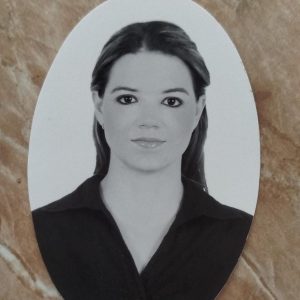Frozen Shoulder Recovery: MSCs + Rehab Timeline
Adhesive capsulitis—better known as frozen shoulder—causes progressive pain and stiffness that can disrupt sleep and daily tasks. When standard therapy stalls, donor‑derived mesenchymal stem cells (MSCs) and exosomes may help calm inflammation and support capsular remodeling. This guide explains how frozen shoulder stem cell therapy works at CRC, who may qualify, and a practical rehab timeline.
What Is Frozen Shoulder?
Frozen shoulder is a capsular disorder characterized by inflammation and thickening of the glenohumeral joint capsule, leading to a painful loss of both active and passive range of motion—especially external rotation and abduction. It often follows three phases:
- Freezing: escalating pain and stiffness (weeks to months)
- Frozen: pain stabilizes; motion most limited (months)
- Thawing: gradual return of mobility (months to a year)
Why Consider MSCs for Frozen Shoulder?
- Anti‑inflammatory signaling to settle the synovitis that drives pain, particularly in the freezing phase.
- Capsular matrix support via paracrine factors and exosomes that may encourage balanced remodeling of the thickened capsule.
- Microvascular effects that support tissue perfusion and facilitate rehab gains.
- Precision delivery under ultrasound guidance into the glenohumeral joint and capsular recesses; may be combined with gentle hydrodistension or needle fenestration when appropriate.
Important: Responses vary. MSCs are an adjunct to—not a replacement for—targeted physical therapy and medical care.
What We Use at CRC
- Allogeneic biologics: We do not harvest cells from patients. CRC uses rigorously screened umbilical‑cord‑derived MSCs and exosomes, prepared in our COFEPRIS‑licensed in‑house lab with certificates of purity, sterility, viability, and cell count.
- Image‑guided injections: Real‑time ultrasound to place the biologic precisely and avoid neurovascular structures.
- Team‑based care: Physicians, sonographers, and rehabilitation specialists coordinate your plan.
Who Might Be a Candidate?
| ✅ Good Candidates | ⚠️ Prefer Other Options / Evaluate First |
|---|---|
| Clinical diagnosis of adhesive capsulitis with persistent pain/stiffness ≥ 6–12 weeks despite PT and home program | Full‑thickness rotator cuff tear with retraction or severe glenohumeral arthritis |
| Diabetes or thyroid disease with frozen shoulder (common association) but medically controlled | Active infection, uncontrolled diabetes/hypertension, bleeding disorder |
| Desire to avoid repeated steroids or manipulation under anesthesia | Post‑traumatic stiffness requiring surgical evaluation |
Every shoulder is unique. A CRC specialist will review your history and imaging to advise safely.
Treatment Day at CRC—Step by Step
- Consultation & planning: confirm diagnosis, review imaging, and set functional goals.
- Biologic preparation: selected allogeneic MSCs/exosomes are thawed and prepared; we review the certificate of analysis together.
- Ultrasound‑guided injection: targeted placement into the glenohumeral joint and capsular recess (anterior/posterior) with local anesthesia; optional hydrodistension per clinician judgment.
Rehab Timeline (Guide)
| Phase | Timeframe | Goals & Example Focus |
|---|---|---|
| Calm & Protect | Week 0–2 | Pain control, pendulums, table slides, gentle PROM; avoid painful end‑range stretching; sleep positioning. |
| Mobilize | Week 3–6 | Capsular mobility (ER in neutral, abduction ladder), posterior capsule work, scapular setting. |
| Strengthen | Week 7–12 | Isometrics → bands for ER/IR, scapular stabilizers, kinetic chain integration. |
| Return | Month 3–6 | Overhead endurance, functional drills (reach, lift, swim, racquet). Progress based on pain‑free ROM gains. |
Expected Outcomes
- Pain often settles within weeks; mobility changes typically build over 2–6 months.
- When paired with a consistent rehab plan, many patients reduce flares and avoid manipulation or arthroscopic release. Results vary by phase and adherence.
- We track function using patient‑reported outcomes and repeat ROM measurements.
MSCs vs. Steroids vs. Hydrodistension vs. Surgery
| Treatment | How It Works | Pros | Considerations |
|---|---|---|---|
| Steroid injection | Short‑term anti‑inflammatory relief | Rapid pain decrease for flares | Transient benefit; repeated use may affect tendon quality |
| Hydrodistension | Saline (± anesthetic) to gently stretch capsule | Can quickly improve motion for some | Effect varies; may need repeat sessions |
| MSC/exosome injection (CRC) | Regenerative signaling to support capsular remodeling | Restorative focus; image‑guided precision | Investigational; rehab adherence critical |
| Surgery (release/manipulation) | Mechanical capsular release or manipulation under anesthesia | Reserved for refractory cases | Anesthesia, recovery time, surgical risks |
Safety & Side Effects
Temporary soreness, swelling, or bruising at the injection site can occur. Serious complications (bleeding, infection, nerve irritation) are uncommon but possible with any procedure. We screen carefully—especially glucose control in diabetic patients—use sterile technique, and coordinate with your treating clinicians.
Why Choose CRC
- COFEPRIS‑licensed in‑house lab with documented quality control.
- Ultrasound‑guided shoulder procedures by experienced physicians.
- Integrated team—orthopedics, radiology, and rehabilitation—under one roof.
- Convenient Tijuana location, ~20 minutes from San Diego Airport.
Meet our Medical Team, explore Our Clinic, and learn about our House Lab.
Educational content only; not a diagnosis or treatment plan. For personal questions, please contact a CRC specialist—con gusto consultaremos con un especialista de CRC.


